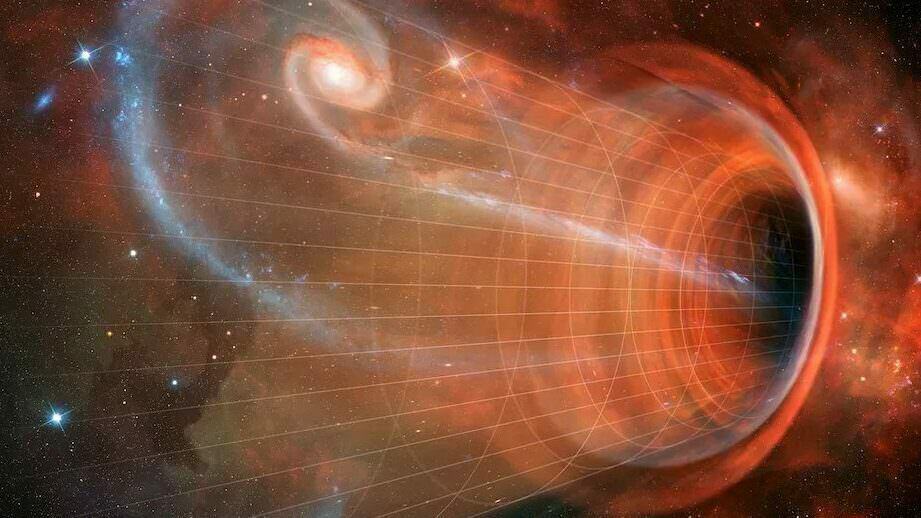When we gaze up at the heavens, we witness an awe-inspiring sight of billions of stars, the magnificent Milky Way, and countless galaxies. However, what lies beyond our visible range or the extent of telescopic exploration? Providing a precise answer to this question is impossible, but we can form various hypotheses based on our existing knowledge. Some of these theories may initially appear fantastical, but upon closer examination, they hold a certain degree of validity. For instance, there exists a hypothesis that suggests the Earth and everything we perceive around us exists within the confines of a black hole. As we are aware, these celestial entities possess an immensely powerful gravitational force that not only engulfs nearby objects but also warps the fabric of time and space. Once ensnared within the clutches of a black hole, no object, not even light, can escape its grasp. However, this does not imply that the entirety of the universe cannot coexist within it.
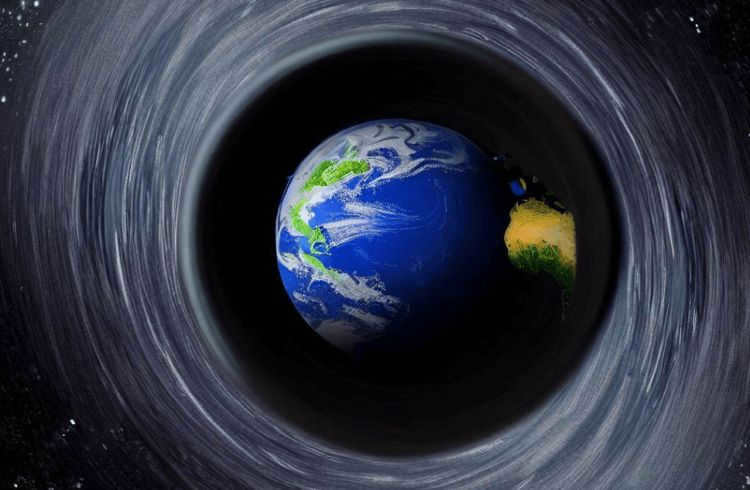

There is evidence supporting the theory that the Earth and our entire universe may exist inside a black hole.
What is the possibility of the Earth being pulled into a black hole?
Is it possible for a massive black hole to engulf the Earth and all the surrounding galaxies? In theory, yes, it is possible. However, if this were to occur, our planet would be destroyed before even entering the black hole’s event horizon. As we mentioned earlier, the immense gravitational force would stretch the Earth into a long, thin shape resembling spaghetti, and time on Earth would slow down significantly.
Even in the highly improbable event that the planet manages to withstand this extreme stretching, it would eventually be pulled into an incredibly compact singularity where it would be unable to endure the immense pressure and temperature. Hence, it would be unwise to entertain the notion that Earth has been absorbed by a black hole and continues to exist within it. However, an alternative theory suggests that our planet may have originated within a black hole.
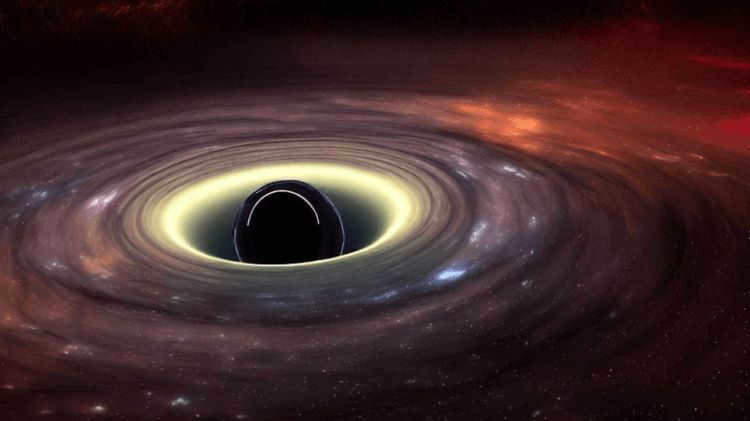
The Earth could potentially face destruction if it were to enter the event horizon of a black hole.
According to some scientists, black holes share similarities with the Big Bang, but their processes occur in reverse. While the Big Bang involves the expansion of space and matter from a single point, a black hole instead compresses matter and space into a singular point. There exists a theory that suggests the Big Bang may have originated from a black hole singularity that existed within a larger parent universe.
The black hole’s center underwent a process of contraction and shrinking before eventually exploding, leading to the creation of the universe. This theory suggests that our expanding universe is actually situated within a black hole. However, what proof supports this hypothesis?
What evidence supports the notion that Earth exists within a black hole?
Known as Schwarzschild cosmology or black hole cosmology, this concept was initially put forward in 1972. It was a topic of discussion among two scientists simultaneously: Raj Patria, an Indian theoretical physicist, and Irwin Goode, a British mathematician.
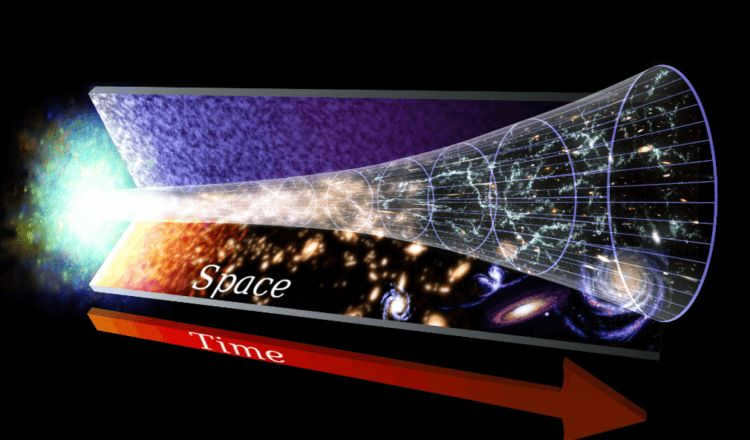
The expansion of the universe is happening at a rapid pace.
This theory provides explanations to some questions that cannot be answered by other theories about the origin of the universe. Specifically, it addresses the reasons behind the Big Bang and why our universe was condensed into a single point. Moreover, this theory also accounts for the accelerating nature of the universe’s expansion. In theory, gravity should slow down this expansion, but in reality, the opposite occurs.
As we understand it, acceleration only occurs when an object falls in a gravitational field. It is possible that this field is generated by a black hole, within which the expansion of the universe is occurring.
What is the extent of the cosmos?
According to Schwarzschild cosmology, it posits that within black holes, there may exist entire universes. In other words, smaller universes may exist within larger universes, akin to nesting dolls. Nevertheless, venturing beyond the confines of a black hole and into the external universe is an impossibility. As previously mentioned, even light is unable to overcome the gravitational pull of a black hole. Consequently, putting this theory to the test in a practical manner is unfeasible.
For more intriguing and captivating scientific content, be sure to check out our Yandex.zen Channel via the provided link.
If our universe does indeed exist within a black hole, it must be of a tremendous size. Otherwise, scientists would have surely detected its presence through various indicators such as time dilation and matter elongation when moving through it. The absence of these signs can only be rationalized by the immense scale of this entity. Nevertheless, it remains plausible that scientists may uncover alternative evidence or disproof of this hypothesis.
It is worth noting that there exists another conjecture positing that black holes are objects which cannot be penetrated. However, everything that falls into them does not perish but instead persists as a holographic replica on the surface of the hole.
Black holes are possibly the most enigmatic entities in the cosmos. Unless, of course, there are concealed phenomena lurking in the depths that elude our knowledge and understanding, which seems improbable. Black holes represent an immense concentration of mass and density compacted into a minute radius. The extraordinary physical characteristics of these entities bewilder even the most astute physicists and astrophysicists. Sabine Hossfender, a theoretical physicist, has compiled a compilation of ten pieces of information about black holes that ought to be familiar to all.
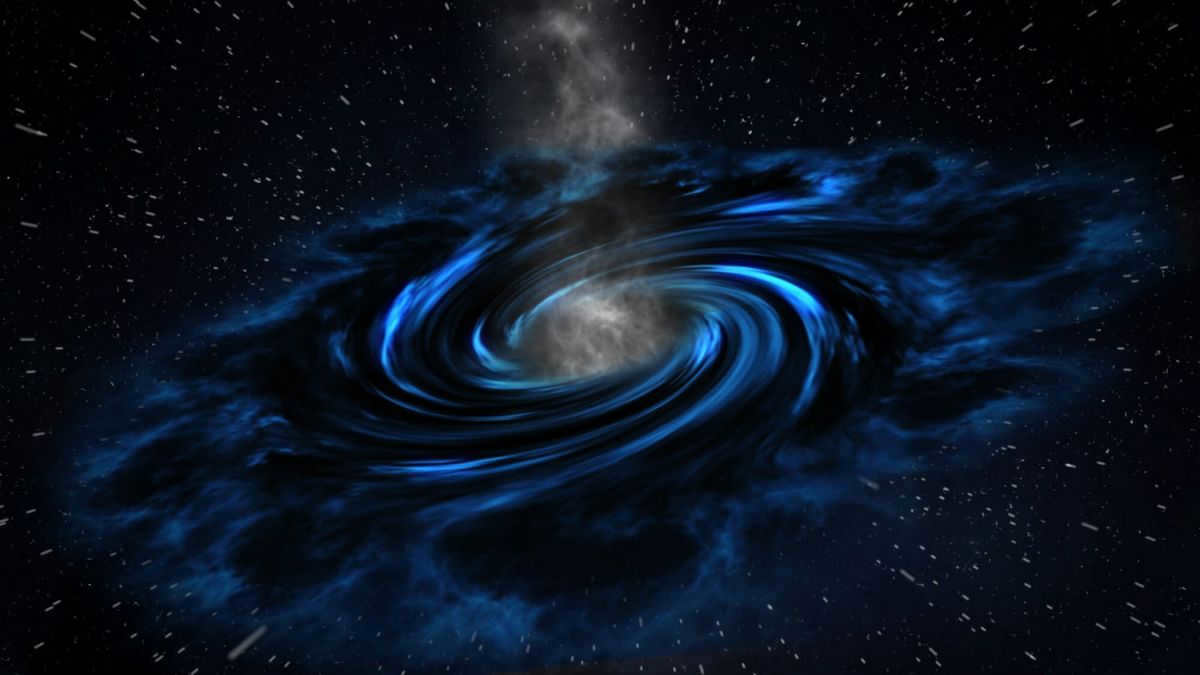
This is likely the visual representation of a black hole
What exactly is a black hole?
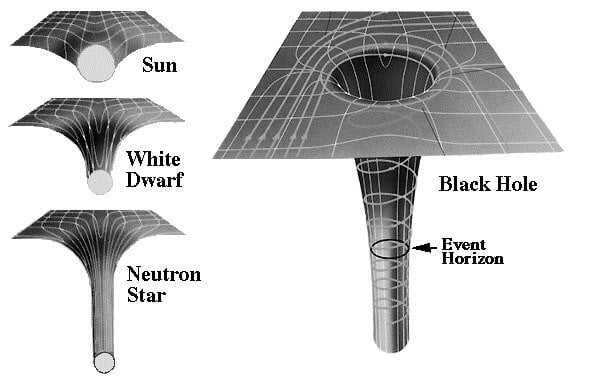
A schematic representation of the configuration of a black hole.
The distinguishing characteristic of a black hole is its boundary, known as the horizon, which prohibits anything, including light, from escaping. If an area becomes permanently isolated, it is referred to as an “event horizon”. If it is only temporarily isolated, it is called a “visible horizon”. However, this temporary isolation can extend for a significantly longer period than the current age of the universe. When a black hole’s horizon is both temporary and long-lasting, the distinction between the former and the latter becomes indistinct.
What is the size of black holes?
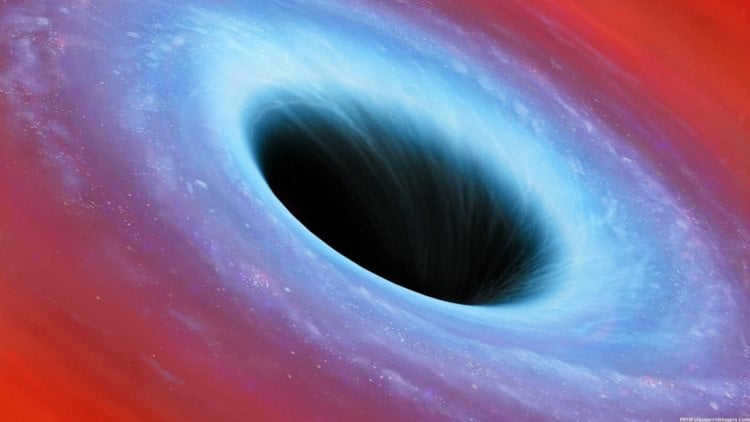
It appears quite impressive, don’t you think?
You can envision the event horizon of a black hole as a spherical shape, with its size directly proportional to the black hole’s mass. Therefore, the more mass that falls into the black hole, the larger the black hole becomes. However, compared to celestial objects, black holes are actually minuscule due to the immense gravitational pressure that compresses their mass into a very small volume. For instance, a black hole with the mass of planet Earth would have a radius of only a few millimeters, which is 10,000,000,000,000,000 times smaller than the actual radius of Earth.
The radius of a black hole is referred to as the Schwarzschild radius, named after Karl Schwarzschild, who first derived black holes as a solution to Einstein’s general theory of relativity.
What lies ahead?
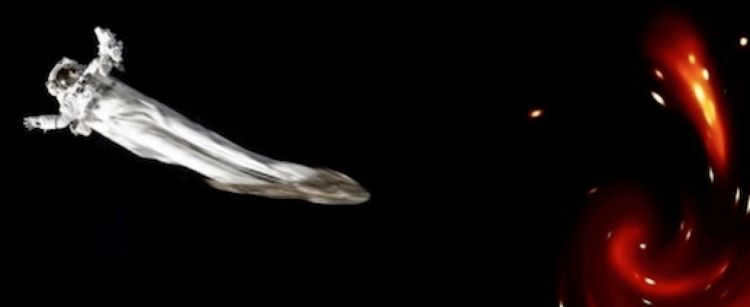

The phenomenon known as the “spaghetti” effect
The experience one has at the boundary of the visible universe is influenced by the gravitational forces exerted on it. These forces, known as tidal forces, vary inversely with the square of the mass of the black hole. Consequently, the larger and more massive the black hole, the weaker the forces become. In fact, if the black hole is sufficiently massive, one could pass through the boundary without even perceiving any changes. This phenomenon, known as “spaghettification,” refers to the stretching effect caused by these tidal forces.
In the early stages of the development of the general theory of relativity, scientists believed that there was a singularity at the boundary. However, subsequent research has proven this assumption to be incorrect.
What does a black hole contain?
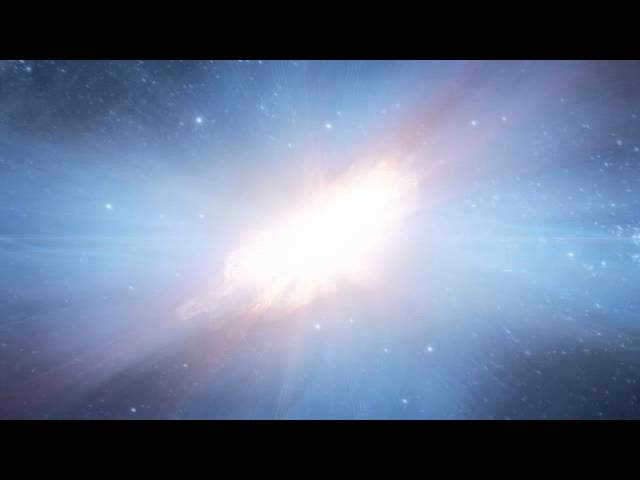
The contents of a black hole remain a mystery, but it is certain that it does not contain a bookshelf. According to the general theory of relativity, a black hole is believed to have a singularity, a point where the gravitational forces become infinitely strong. Once an object crosses the event horizon of a black hole, it is believed that it can only move towards the singularity and cannot escape. The singularity is a region where the laws of general relativity break down and a new theory, such as quantum gravity, is needed to describe the physics. It is widely believed that quantum gravity will provide a new understanding of what lies inside a black hole, replacing the concept of a singularity with something different.
There are currently four known methods for the formation of black holes. The most well-understood method is associated with the collapse of a star. When a star reaches a certain size, it undergoes a process called nuclear fusion, where it fuses atoms together to release energy. Eventually, the star exhausts all the available atoms for fusion and the fusion process stops. At this point, the star’s pressure can no longer support its own weight, causing the matter to collapse inward towards its gravitational center. As the matter collapses, it becomes increasingly dense, eventually reaching a point where nothing can escape its gravitational pull – this is the birth of a black hole. These types of black holes are known as “solar-mass black holes” and are the most common type.
Have you ever wondered what would occur if a black hole were to appear in close proximity to Earth?
Supermassive black holes, known as the next common type of black holes, can be observed at the centers of various galaxies and possess masses approximately one billion times greater than solar mass black holes. The precise process by which they form remains unknown. The prevailing theory suggests that supermassive black holes begin as solar-mass black holes and then gradually accumulate other stars through absorption, particularly in densely populated galactic centers. However, they appear to consume matter at a faster rate than anticipated by this simple explanation, and further research is required to understand the exact mechanisms involved.
An alternative and more controversial concept proposes the existence of primary black holes, which could have originated from any mass during significant density fluctuations in the early stages of the universe. Although this is a plausible hypothesis, developing a model that generates primary black holes without producing an excessive amount of them presents a considerable challenge.
We have exclusive content on our Yandex.Zen channel that is not available on the website.
Additionally, there is a highly speculative concept that suggests the possibility of the Large Hadron Collider generating minuscule black holes with masses similar to that of the Higgs boson. However, this hypothesis is contingent upon the existence of extra dimensions within our universe. To date, no empirical evidence has been found to support this theory.
What evidence do we have for the existence of black holes?
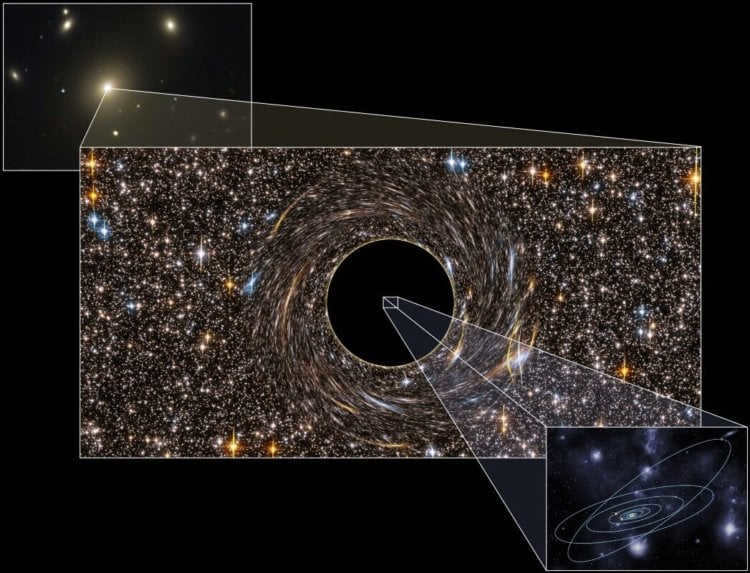
Black holes have not yet been thoroughly investigated and are unlikely to receive extensive research attention in the next twelve years.
We possess a plethora of observational proof supporting the presence of massive, lightless objects. These objects reveal themselves through their gravitational pull, demonstrated by the movement of surrounding stars and gas clouds. Additionally, they produce gravitational lensing. It is evident that these objects lack a solid surface, as observations indicate that matter falling onto a surface would result in a greater number of ejected particles than matter falling beyond the event horizon.
What was Hawking’s reasoning for claiming last year that black holes are non-existent?
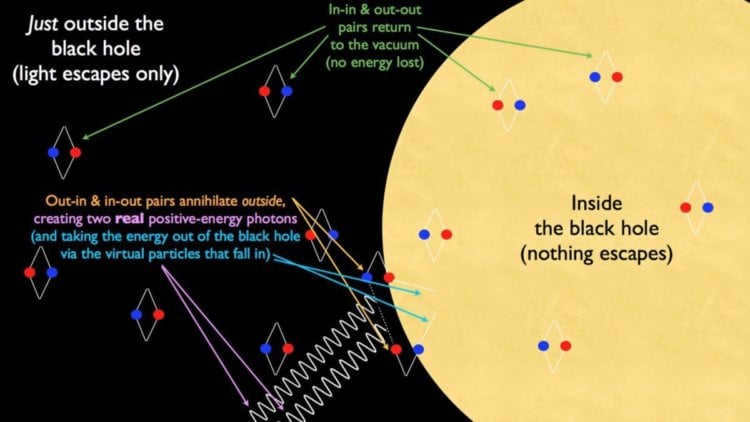

Are black holes truly real?
Hawking’s statement implied that black holes lack a never-ending event horizon, only possessing a transient apparent horizon (refer to point one). Strictly speaking, only the event horizon can be considered a black hole.
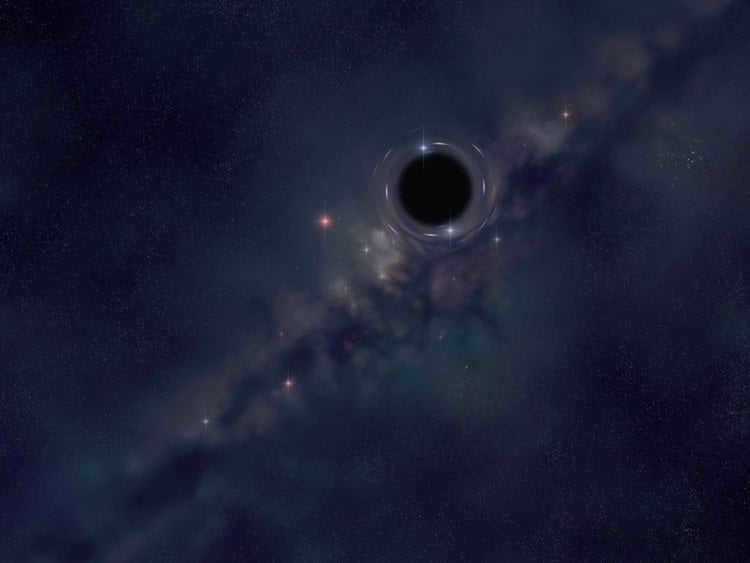
It may seem unbelievable, but black holes actually emit radiation.
This radiation is a result of quantum effects, specifically those related to matter rather than gravity. When a black hole collapses, its dynamic space-time alters the very nature of particles. Similar to how time is distorted near a black hole, the concept of particles becomes observer-dependent. For instance, an observer falling into a black hole may perceive it as a vacuum, while an observer far away would see it as a space teeming with particles. This phenomenon is caused by the stretching of spacetime.
If you’re interested, you can learn more about the largest black hole ever discovered here.
Stephen Hawking was the first to discover a phenomenon known as “Hawking radiation”, which refers to the radiation emitted by a black hole. This unique radiation is characterized by its temperature, which is inversely related to the mass of the black hole. In simpler terms, smaller black holes have higher temperatures. However, it is worth noting that the temperatures of the stellar and supermassive black holes that we are familiar with are significantly lower than the temperature of the microwave background. As a result, these black holes are not detectable through observation.
What is the concept of the information paradox?
The information paradox arises from the phenomenon of Hawking radiation. This radiation is entirely thermal, meaning it is random and possesses only temperature-based properties. Within the radiation, there is no information regarding the origins or formation of the black hole. However, as a black hole emits radiation, it loses mass and contracts. This occurs regardless of the matter that entered the black hole or its original composition. Consequently, it is impossible to determine the initial state of the black hole solely based on its final state of vaporization. This process is considered “irreversible,” which poses a problem within the context of quantum mechanics where no such irreversible process exists.
It appears that the current understanding of quantum theory is incompatible with the phenomenon of black hole evaporation, which calls for a resolution. To address this inconsistency, it is widely believed among physicists that the key lies in the inclusion of information within Hawking’s radiation.
How does Hawking propose to tackle the black hole information paradox?
Hawking puts forth the notion that black holes possess a mechanism for storing information that has yet to be fully acknowledged. This information is thought to reside on the black hole’s event horizon and can potentially manifest as subtle shifts in Hawking’s radiation. These minute fluctuations could potentially contain data pertaining to the matter trapped within the black hole. The precise intricacies of this process remain uncertain, and scientists eagerly await a more comprehensive technical paper from Stephen Hawking, Malcom Perry, and Andrew Strominger, which is expected to be published in late September.
Shall we talk about Black Holes on our Telegram channel, let’s say?
When Cooper, the main character of the renowned film “Interstellar,” crosses the event horizon of a black hole and enters four-dimensional space, he finds himself in a room with his daughter, where they can observe various objects and the “threads” of time emanating from them. However, the true nature of these enigmatic cosmic entities remains a mystery. According to the General Theory of Relativity (GTR), there exists a singularity beyond the event horizon, where space and time converge. This singularity represents the point at which the matter comprising the black hole collapses, and the laws of physics as we know them cease to be applicable. Nevertheless, scientists entertain alternative theories. Stephen Hawking, for instance, proposed that black holes might serve as gateways to other universes. But how can we gain insight into what lies within, when no human can ever venture there? Gravitational waves and computer simulations may hold the key to unlocking this puzzle.
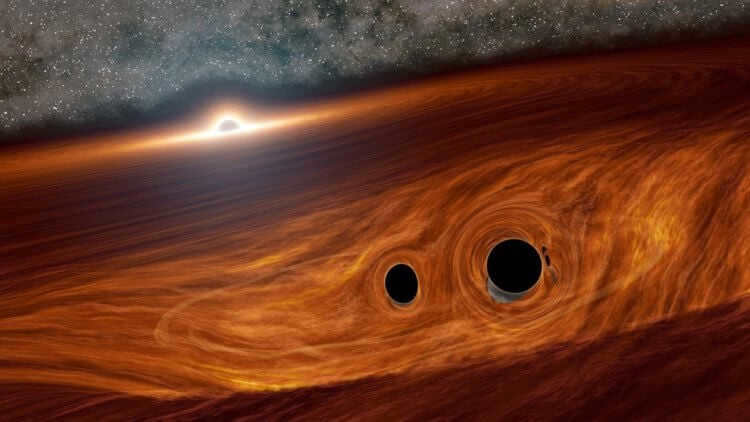

There have been numerous cosmic disasters in the cosmos, such as the merging of supermassive black holes.
What are singularity and the “point of no return”?
In 2015, researchers from the LARGO and VIRGO laboratories announced the discovery of gravitational waves originating from the collision of two black holes. Prior to this, black holes were regarded as theoretical entities, and even Einstein doubted the possibility of proving their existence (the same can be said for gravitational waves). However, it is now 2023, and humanity has not only confirmed the existence of gravitational waves, but also captured images of the event horizon of two black holes.
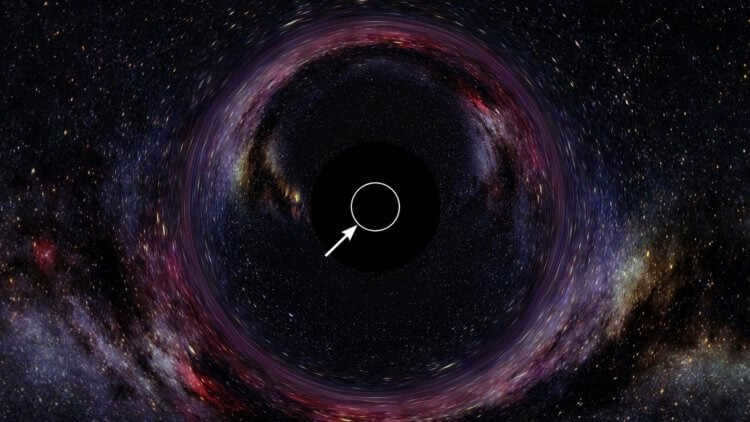
The event horizon is the outer circle of a black hole, while the singularity resides at its center.
In the spring of 2019, we caught a glimpse of the event horizon when an image of Sagittarius A*, the central object of the Messier 87 galaxy, located 54 million light-years away, was released. Recently, in May 2022, another image was published, this time showing a black hole at the heart of the Milky Way.
As we keep the recent discoveries in mind, it’s important not to overlook the singularity – the central region of the black hole that lies beyond the event horizon. This point is believed to contain the mass of an infinitely dense black hole, but its exact nature remains a mystery.
Black holes and computer simulations
Returning to the topic of gravitational waves – disturbances in the fabric of spacetime caused by cosmic events such as the collision of black holes or neutron stars – their amplitude is directly proportional to the mass and velocity of the objects involved.
The detection of gravitational waves has provided further evidence for Einstein’s theory of general relativity, with approximately 100 instances of merging black holes being observed since the initial discovery. Now, thanks to the collaborative efforts of a team of 14 scientists led by Professor Lam Hui from Columbia University, computer modeling of cosmic catastrophes offers new insights into the dynamics of black hole collisions.
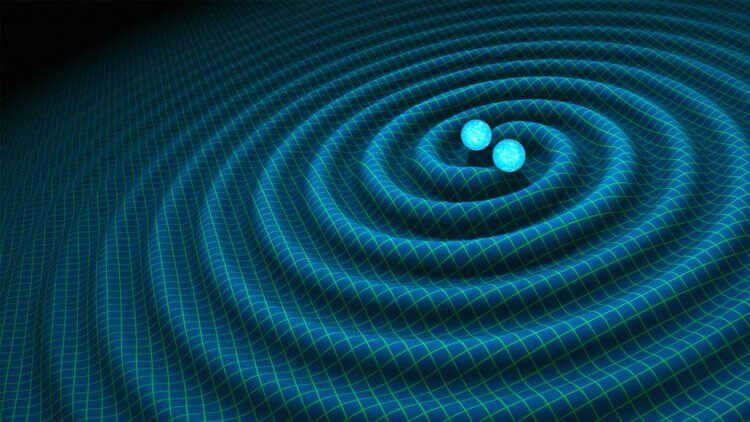
The collision between neutron stars and black holes, which are incredibly massive objects, produces gravitational waves that cause disturbances in the fabric of space and time.
Further insight into the detection of gravitational waves can be found in our previous article. Make sure you don’t miss it.
In an article published in Physical Review Letters, the researchers present an innovative approach to simulate the signal emitted by gravitational waves by incorporating nonlinear interactions into the model. Previously, the models of gravitational waves only considered linear interactions, which were effective but did not fully capture the diverse behaviors of cosmic objects that have been observed. The recent study significantly enhances the models by 10% (a notable improvement).
The authors of the research paper state that this development marks a significant advancement in preparing for the next phase of gravitational wave detection and deepening our understanding of gravity and the phenomena observed in the vast expanse of space.
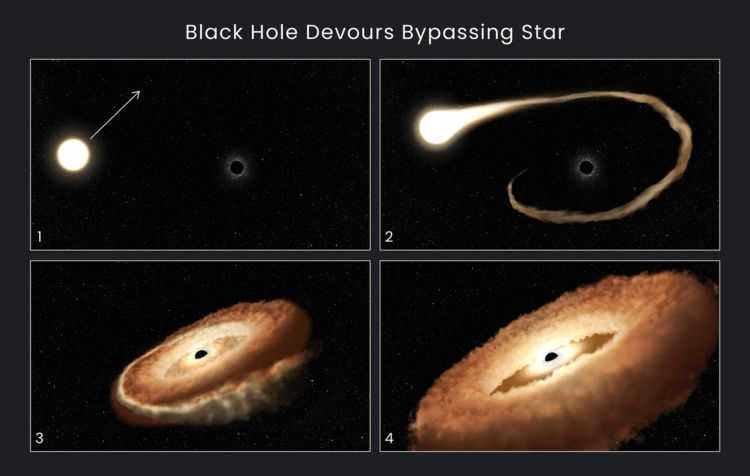
Right in front of you, you can witness the phenomenon of a star getting engulfed by a black hole.
This innovative technique also offers valuable insights into the internal workings of black holes by explaining the behavior of gravity under incredibly intense astrophysical circumstances. “In our quest for knowledge, we observe the distortions in the fabric of spacetime, just like detectives. This is the most effective approach to unraveling the enigmatic nature of black holes,” stated one of the 14 contributors to the study.
Black Hole Modeling
The timing of the study is perfect as the LIGO observatory is set to reopen in March after its closure in 2020 due to the COVID-19 pandemic. With several large gravitational wave detectors expected to gather data in the upcoming years, the availability of enhanced computer models could potentially lead to groundbreaking discoveries.
Enhanced computer models now allow for the estimation of the spatial and temporal makeup of black holes and their contents by “listening” to the sound emitted during the collision and fusion of these cosmic behemoths. It is anticipated that these models will eventually aid in the creation of a comprehensive representation of the internal composition of black holes and the fate of matter that enters them.
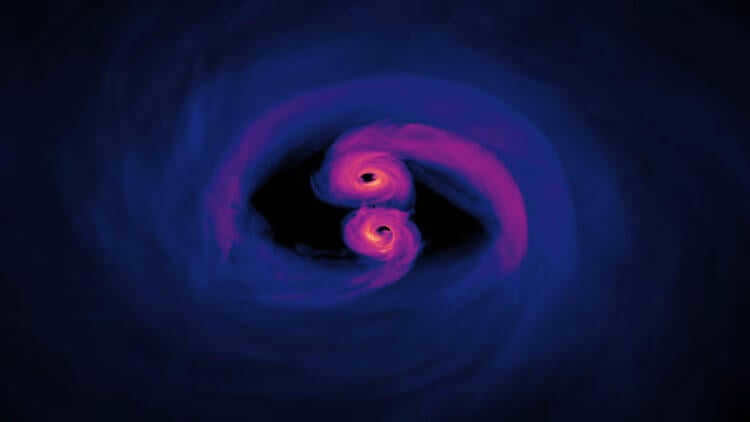

The model employs innovative techniques to analyze the waves emitted by black holes during their collision.
Non-fatal interactions can be likened to shaking a box and the resulting sound, which provides information about its contents. In this case, the collision of two black holes is akin to the shaking, and the gravitational waves produced in the process are akin to the sound. This outcome, as experts anticipate, will enable the detection of even more cosmic catastrophes in the farthest corners of the Universe.
Advancing computer simulations is a significant stride towards the upcoming phase of gravitational wave detection and exploration of gravity, the most crucial (and enigmatic) natural force, and its behavior across the boundless expanse of the infinite Universe. However, computer modeling represents merely a fraction of this monumental endeavor.
To illuminate the enigma of the contents of black holes, attention has been turned to dark energy. Dark energy, the force responsible for the Universe’s ever-expanding rate (which, interestingly, contradicts GR for a moment), appears to hold the key to comprehending the structure of black holes. This connection is supported by the findings of a recent study that involved scientists measuring the mass of black holes within a colossal elliptical galaxy.
In such galaxies, star formation typically ceases, leading to a catastrophic scarcity of material for “building.” Consequently, the black holes situated at the core of these galaxies find themselves devoid of anything to consume. As a result, these entities are unable to accumulate mass, as explained by experts.
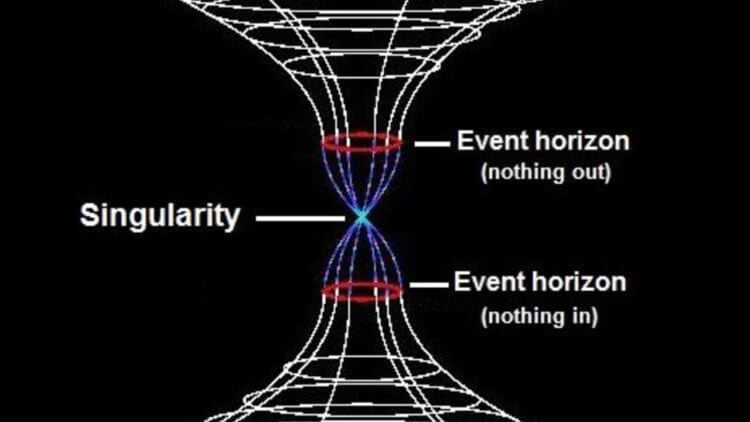

At the core of a black hole lies singularity. The upper and lower points correspond to the event horizon, which absorbs all surrounding matter and prohibits its escape beyond the confines of the black hole.
According to two studies conducted by physicists at the University of Hawaii and published in the Astrophysical Journal and Astrophysical Journal Letters, distant elliptical galaxies that lack star formation have been found to contain supermassive black holes that continue to grow. Furthermore, these enigmatic entities are seen to increase in mass at a rate that mirrors the expansion of the universe. This raises the possibility that black holes may have a role in the generation of dark energy, as suggested by one of the researchers. It is worth noting that the center of a black hole is a point where the known laws of physics cease to function due to the overwhelming gravitational force present.
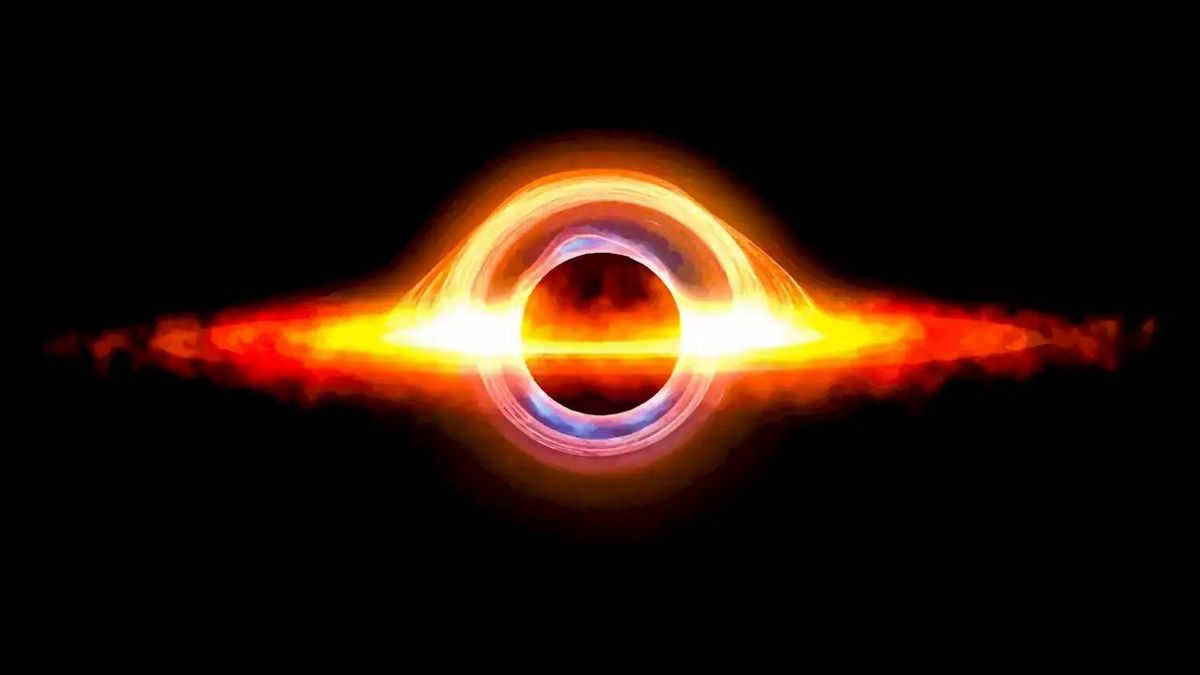
According to some physicists, black holes are believed to be the origin of the enigmatic dark energy that is thought to be responsible for the expansion of the universe.
Furthermore, many physicists have proposed that rather than a singularity, the core of a black hole may contain a type of dark energy known as vacuum energy. However, it cannot be asserted that physicists have solved the enigma of dark energy and fully understand the contents of black holes. Nevertheless, through the utilization of updated computer models, as well as further observations and data collection, numerous fundamental questions about our world and the universe we inhabit will be answered.
In this article, we delve into the possibility of black holes serving as gateways for traversing space and time, so be sure not to miss it!
Do you have any speculations about the contents of black holes? Can they potentially serve as gateways to other dimensions or are they the origin of enigmatic dark energy? The solution, as per usual, lies within our Telegram chat and the comments section below this article!
Black holes are undeniably among the most awe-inspiring and enigmatic entities in the observable cosmos. While modern advancements have enabled us to capture images of these phenomena, the inner workings of a black hole still remain a captivating enigma.
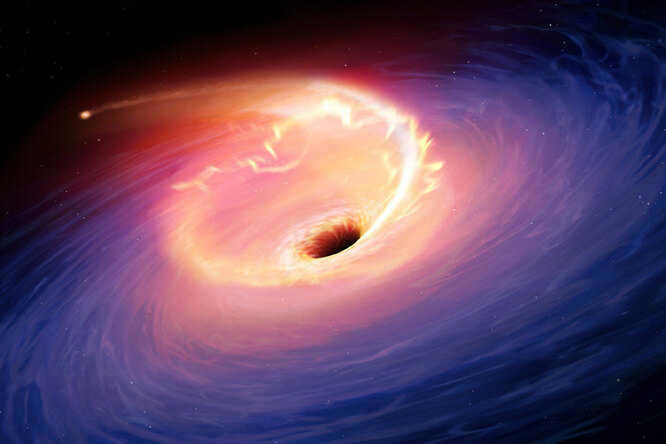

Initially predicted in the late 18th century and elucidated by the Theory of Relativity in the early 20th century, black holes are either too minuscule or too distant to be discerned by conventional telescopes. However, with the advancement of science and technology, we now possess more sophisticated telescopes capable of capturing signals across various wavelengths. This breakthrough has facilitated the observation of black holes.
The center of the Milky Way harbors a black hole.
Galaxy M87, which is among the largest galaxies in the Local Supergroup of galaxies, is positioned about 54 million light-years away. At the heart of this galaxy lies the supermassive black hole M87*, which has a mass equivalent to 6.5 billion suns and consumes 90 times the mass of Earth on a daily basis (equivalent to one solar mass every 10 years).
Structure of a black hole. Here, we can see the following components: 1 – event horizon; 2 – accretion disk; 3 – relativistic jet; 4 – photon sphere
What is the composition of a black hole?
Despite its seemingly simple structure, a black hole is actually composed of multiple parts, some of which are visible and others that can only be theorized. Let’s examine the components of a typical black hole. The event horizon is an imaginary boundary beyond which nothing can escape. It has a characteristic size known as the gravitational radius. Once an object crosses the event horizon, it enters the singularity and disappears from the observable Universe. The black hole M87* has a gravitational radius of 0.019 light-years, which is over a hundred times larger than the Earth’s orbit. The accretion disk is a disk of matter that falls into a black hole. As it accelerates and heats up, the matter emits radiation across a wide range of wavelengths, allowing us to observe the immediate vicinity of the black hole. The accretion disk of the supermassive black hole M87* stretches 0.4 light-years, which is thousands of times farther than the orbit of Pluto.
The photon sphere is created by the rotation of light in a circular orbit around the black hole. The position of particles trapped within this region is precarious, and after completing one or more revolutions, they inevitably plunge into the depths of the black hole or spiral out into the vastness of outer space.
Illustration of a black hole
The depiction of a black hole in an image does not resemble a drain pulling in stellar matter, as it is sometimes portrayed. In reality, even in a photograph of a black hole, one can distinguish several distinct components, the examination of which can yield a wealth of information about this enigmatic entity.
The shadow of the hole is created as a result of the curved path taken by photons that fly close to the event horizon sphere. Its size is approximately 2.6 times the gravitational radius of the black hole. The opposite side of the accretion disk becomes visible due to the strong gravitational lensing effect. Some photons that orbit the event horizon sphere from the other side of the black hole allow us to see the far sides of the accretion disk – the upper and lower sides.
By the way, TechInsider has introduced a new section called “Company Blogs.” If your organization wants to share what it does, feel free to contact us
MATTER IS NOT REAL Matter is not a tangible entity. It is an abstract concept with no physical substance. This concept encompasses everything in the world. 1. The only true existence is ENERGY. 2. Energy exists solely in SPACE. ENERGY can be found: a) in the form of Radiation – a free form of Energy. b) in the form of Matter – a form of Energy restricted by force fields. Matter is a form of Energy constrained by force fields. Force Field is a characteristic of Matter. When Energy takes the form of Matter, it gains binding elements: external gravitational and internal electromagnetic fields. SPACE is the domain where Energy exists. The entire Universe is interconnected and unified with Energy. Any alteration to the space would inevitably affect the Energy within it. a) Any compression of bound Energy (matter) will always result in its transformation into free Energy. b) Any compression of free Energy will always lead to its conversion into its material form. c) Simply compressing a section of space without affecting its contents and the space itself is impossible. The structure of the Universe’s space is highly intricate. It encompasses and connects EVERYTHING in the Universe, from minuscule energy units to massive galactic structures. Interaction and connection between all entities occur through the space of the Universe. conclusion: 1. The entire physical diversity of the existing world is formed and consists solely of Energy and Space. 2. Once science acknowledges this, it will be able to convert one form of Energy into another. 3. Matter, including the so-called “Dark Matter,” is non-existent. These are concepts fabricated by humans. Allow me to elaborate: Stars, Planets, Atoms, Motion, Time, Age, Dimensions, Past, Present, Future, Higgs Boson, Black Holes, Big Bang, etc., are all SUBJECTIVE. ALL of these are SUBJECTIVE human PERCEPTIONS. These concepts were created by humans to explain the incomprehensible phenomena and processes that exist in the Universe. Humans became so enamored with their own explanations of these unfathomable processes that they started to believe in them and consider these invented concepts as Real Physical Quantities. This is a fallacy. As Physical Quantities, these concepts do not exist!!!
Physicists are utilizing quantum computing and machine learning to gain insights into the contents and processes occurring within black holes. What discoveries have they made thus far?
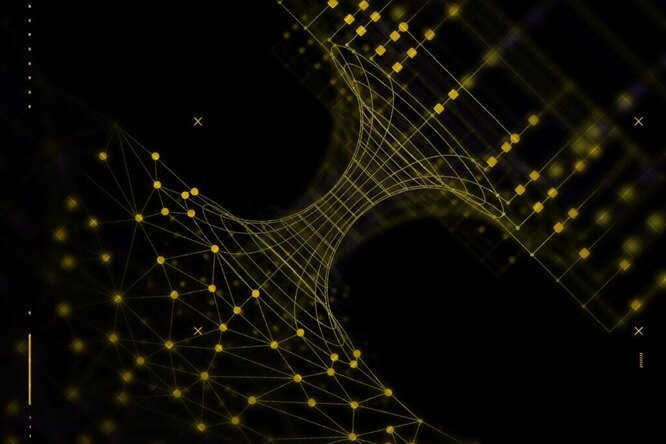
By utilizing a quantum computer and a neural network, scientists have managed to gain some insight into the inner workings of a black hole.
The nature of black holes
Unique Characteristics of Black Holes
Every single black hole discovered by scientists possesses distinct and individual features. They are assessed based on the following criteria:
- The size of the black hole
- The presence or absence of electrical charges
- The black hole’s static nature or its ability to rotate rapidly
A black hole is an immense celestial entity with a structure that is challenging for the human brain to comprehend. Its entry point is “sealed” by the event horizon, which is difficult to define precisely. However, despite its lack of a definite shape, it functions as a sort of “portal” or “barrier” for the black hole.
What occurs to an object that discovers itself inside a black hole?
When any object in space crosses the event horizon, it will inevitably face its demise by being pulled into a black hole. Typically, the time it takes to reach a black hole is measured in seconds.
Upon entering the black hole, space and time merge and cease to exist as separate interconnected realities. Due to the immense mass of the black hole being condensed into an infinitesimally small point, gravity is distorted at this location. As a result, every object that enters the black hole begins to undergo a transformation in its shape. The specifics of what happens to the object thereafter still remain a mystery to scientists, but they have been gradually edging closer to unraveling the answer over the years.
As a result of various experiments, American physicists have put forward the theory that an individual who happens to be in the vicinity of a black hole has the potential to survive. The hypothesis posits that upon crossing the event horizon, the person will be duplicated, with the original version being consumed by the intense stream of radiant particles. Consequently, for observers situated outside the black hole, the person will appear to have perished, while the subject themselves will perceive no discernible change. This phenomenon has been dubbed the “Hawking Effect” in honor of the renowned British theoretical physicist Stephen Hawking.
Experts maintain that, at present, black holes do not pose an immediate danger to humanity. Nevertheless, the profound enigma surrounding the interior of these colossal celestial entities remains deeply unnerving and unsettling.
What has been discovered so far about black holes?
A physicist from the University of Michigan is utilizing quantum computing and machine learning to gain a deeper understanding of a concept known as holographic duality, which is crucial in comprehending the inner workings of black holes.
Holographic duality is a mathematical proposition that links the theories of particles and their interactions with the theory of gravity. This proposition posits that gravitational theory and particle theory are mathematically identical: whatever occurs mathematically in gravitational theory also occurs in particle theory, and vice versa.
To visualize this concept, consider once again the example of a black hole. A black hole, with its immense mass, causes spacetime to become distorted. The gravity of the black hole can be mathematically linked to the movement of particles in two dimensions, even though the black hole exists in three-dimensional space. Consequently, what we perceive as a black hole is actually a two-dimensional projection caused by the particles.
Some scientists propose the idea that our entire universe may be a holographic projection created by particles. This notion, if supported by compelling scientific evidence, could potentially revolutionize our understanding of quantum gravity.
Scientists conducted a research project in 2022 to investigate holographic duality by utilizing quantum computing and deep learning techniques to identify the quantum matrix models’ lowest energy state. The study utilized two matrix models that possess the characteristics of complex models used to describe black holes through holographic duality, while still being solvable through conventional means.
These matrix models serve as representations of objects in string theory, where particles are represented as one-dimensional strings. When solving these matrix models, researchers aim to identify a specific particle configuration that corresponds to the system’s ground state, which is the state with the lowest energy. The study demonstrated the feasibility of identifying this ground state using two distinct methods.
The findings of the study provide a significant milestone for future investigations utilizing quantum and machine learning algorithms. Researchers can employ these algorithms to explore the concept of holographic duality in order to study quantum gravity.
Alternative hypotheses regarding the contents of black holes
Gaining insight into the inner workings of black holes remains an elusive feat. Thus far, scientists have not discovered a method to achieve this. Nonetheless, they have formulated numerous theories regarding the potential existence of phenomena beyond the event horizon.
1. Theory of a Rotating Vortex
One theory suggests that the substance within a black hole exists in the form of a rapidly rotating vortex. The entity that enters the event horizon experiences a significant elongation and starts revolving around the core, resembling the movement of spaghetti within a cooking pot. This phenomenon has been aptly named “spaghettification” by scientists.
Based on Stephen Hawking’s research, radiation is the sole phenomenon capable of escaping a black hole. This suggests that black holes gradually fade away over time. While black holes cannot actually vanish, as they are indestructible entities, they can simply “disappear.”
Therefore, Hawking proposed that an object that falls into a black hole eventually returns to our world in the form of radiation. However, this does not imply that an astronaut, for instance, who enters a black hole will emerge unscathed and alive. Hawking’s theory focuses on the potential preservation of quantum numbers, which are the charges of elementary particles, as well as the transition of matter into antimatter.
3- The hypothesis of no consequences
This hypothesis appears to be the most positive, but regrettably, it is merely a conjecture lacking substantial proof. Scientists conjecture that the restriction of surpassing the event horizon solely pertains to light, and that the supermassive gravitational entity itself is situated considerably distanced from the event horizon.
4- The theory of white holes
This concept emerged as a result of pondering the question: “In the event that light is unable to escape a black hole, what becomes of it within the confines of this celestial phenomenon?”. Consequently, researchers have not entirely dismissed the possibility that within black holes exists not only absolute darkness, but also tangible alternate universes that exist in a highly condensed state, unlike our own.
This idea was also put forth by Stephen Hawking. He proposed that the singularity within a black hole could potentially exist as an alternative universe within space-time. According to this concept, one could potentially venture into other worlds through imagination! However, regrettably, returning from such a journey is deemed impossible.
First and foremost, Einstein’s general relativity has demonstrated that we inhabit a genuine Riemannian space. In essence, we are able to ascertain the metrics of this space. What is the approach of modern physics? It is quite the opposite. They attempt to force general relativity onto a flat geometry, incorporating quantum fields as the foundation of gravitation, even though the properties of these fields do not align with the principles of general relativity. In essence, they are distorting the theory by employing clearly unsuitable methods. Einstein anticipated this and issued a warning. Naturally, he could not have foreseen that the pursuit of the “philosopher’s stone” would reach such proportions. Meanwhile, the advancement of general relativity does not necessitate new techniques or “new” mathematics. Nothing will change if one discovers that a certain transformation is a group or adds a dozen dimensions. Such matters should be studied in school, rather than by professors lacking proper mathematical education. Of course, such studies are important, but “it is not physics anymore” (V.L. Ginzburg). Progress in general relativity can be achieved through the methods of the early 20th century. If Einstein had posed the problem of obtaining the exact equation for the gravitational field, he likely would have solved it in 1916. At the very least, everything necessary was already available by the end of 1915.
Here’s my unique take on the question of what lies inside a black hole! It’s the place where matter undergoes a transformation into energy. To put it simply, at the core of a black hole lies the birthplace of the universe.
I have a fondness for indulging in fantasies inspired by movies and scientists. The Earth was on the verge of demise due to the devastating effects of climate change. For centuries, mankind has been striving to comprehend and analyze the intricate structure and principles governing black holes. Then, out of the blue, a remarkable opportunity emerged – a wormhole appeared. It was unanimously decided to venture through this extraordinary gateway and explore an entirely different galaxy situated in close proximity to a black hole, which would allow for a more accessible study of its enigmatic nature. The planets in the immediate vicinity of this celestial phenomenon were also experiencing radical shifts in climate and time. A singularity. In an attempt to transcend the confines of conventional knowledge, scientists postulated the existence of a five-dimensional space within the star. This breakthrough enabled them to construct a visual representation of time, resembling a canyon, where descending would transport one to the past, and ascending would lead to a future akin to a mountain. Thus, a solution presented itself – by altering the events of the past, we could potentially rectify the trajectory of the future. As the saying goes: “Oh, if only the young knew and the elderly possessed the power to act.”

